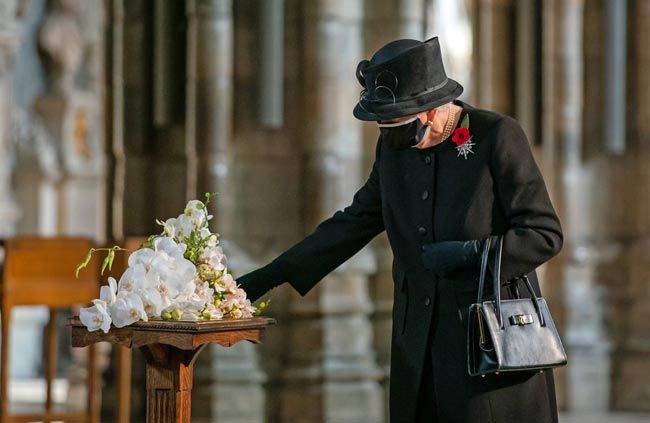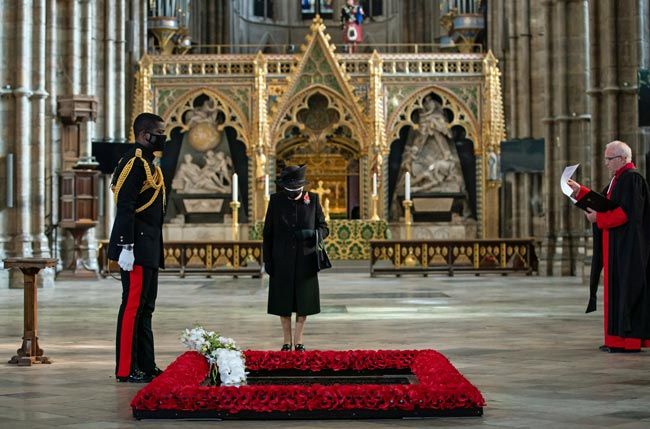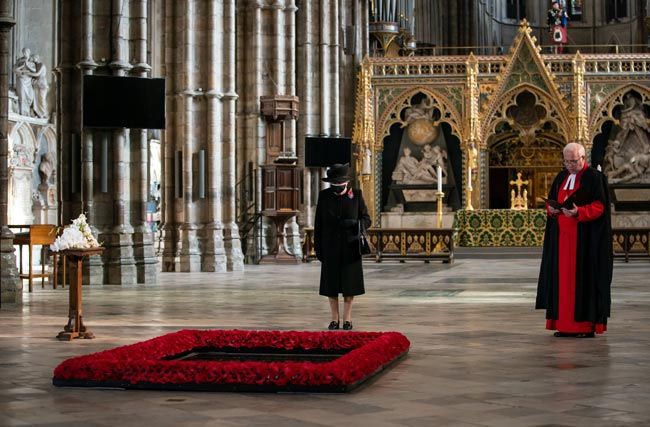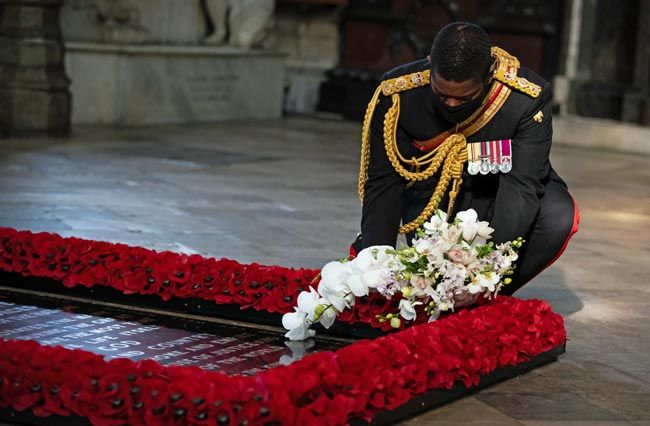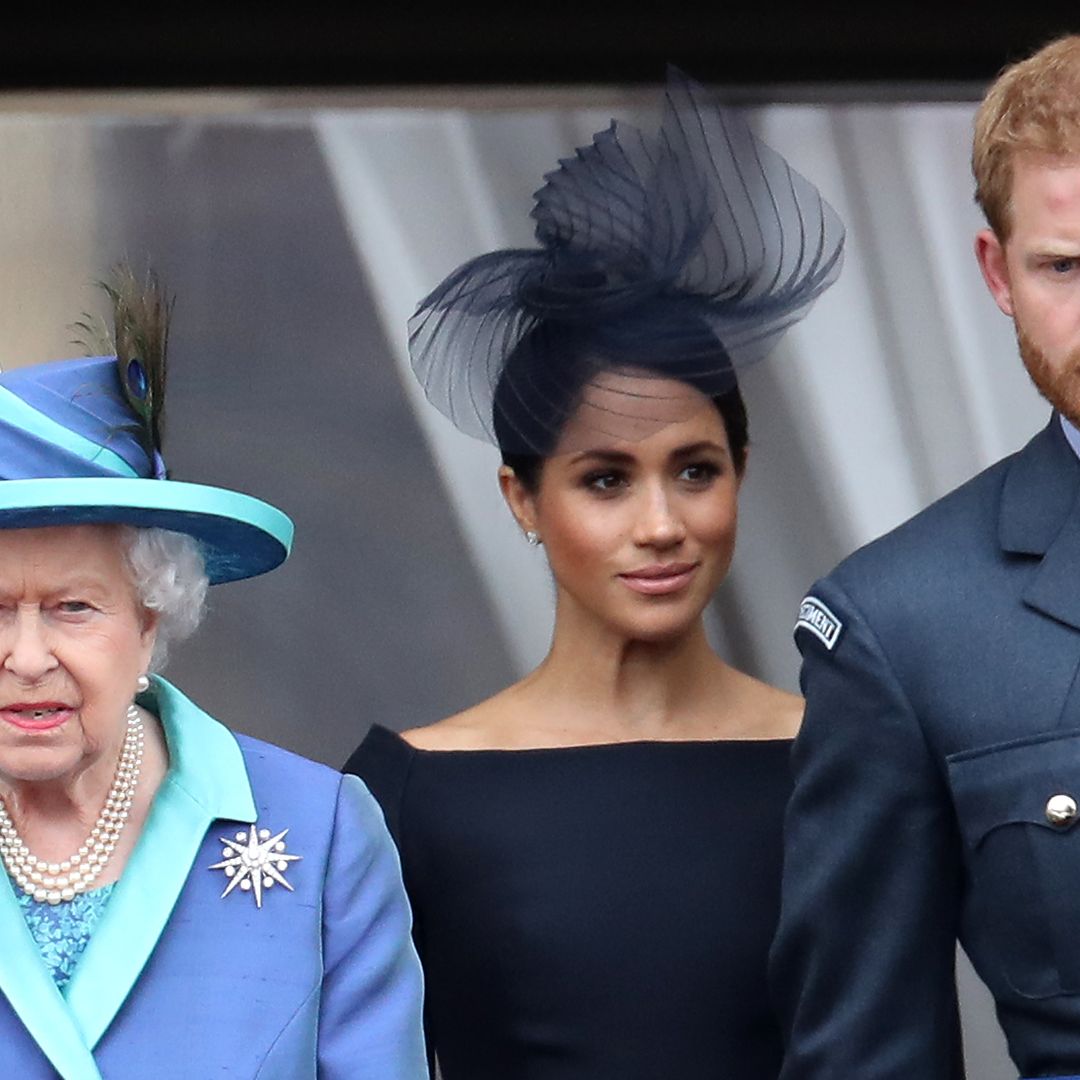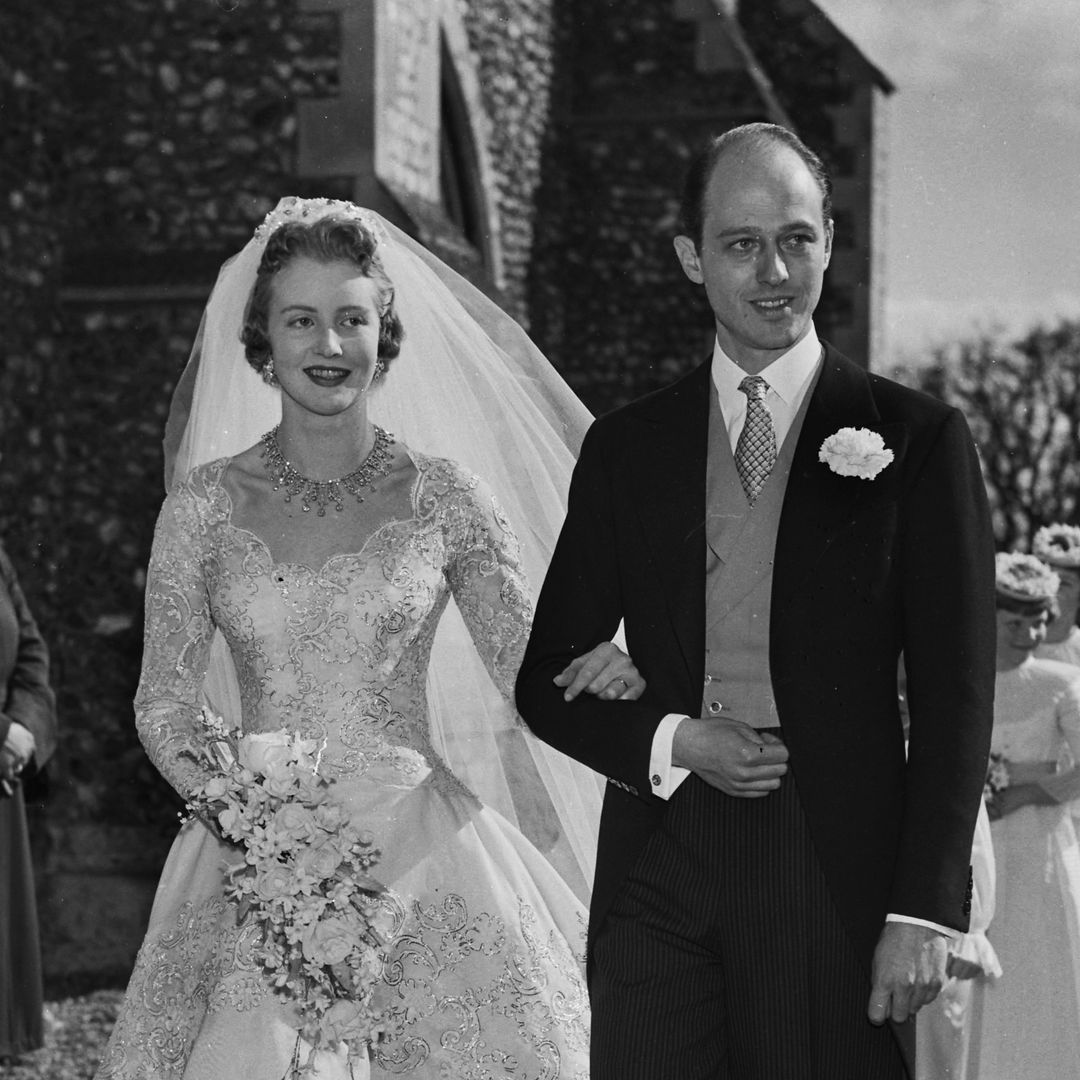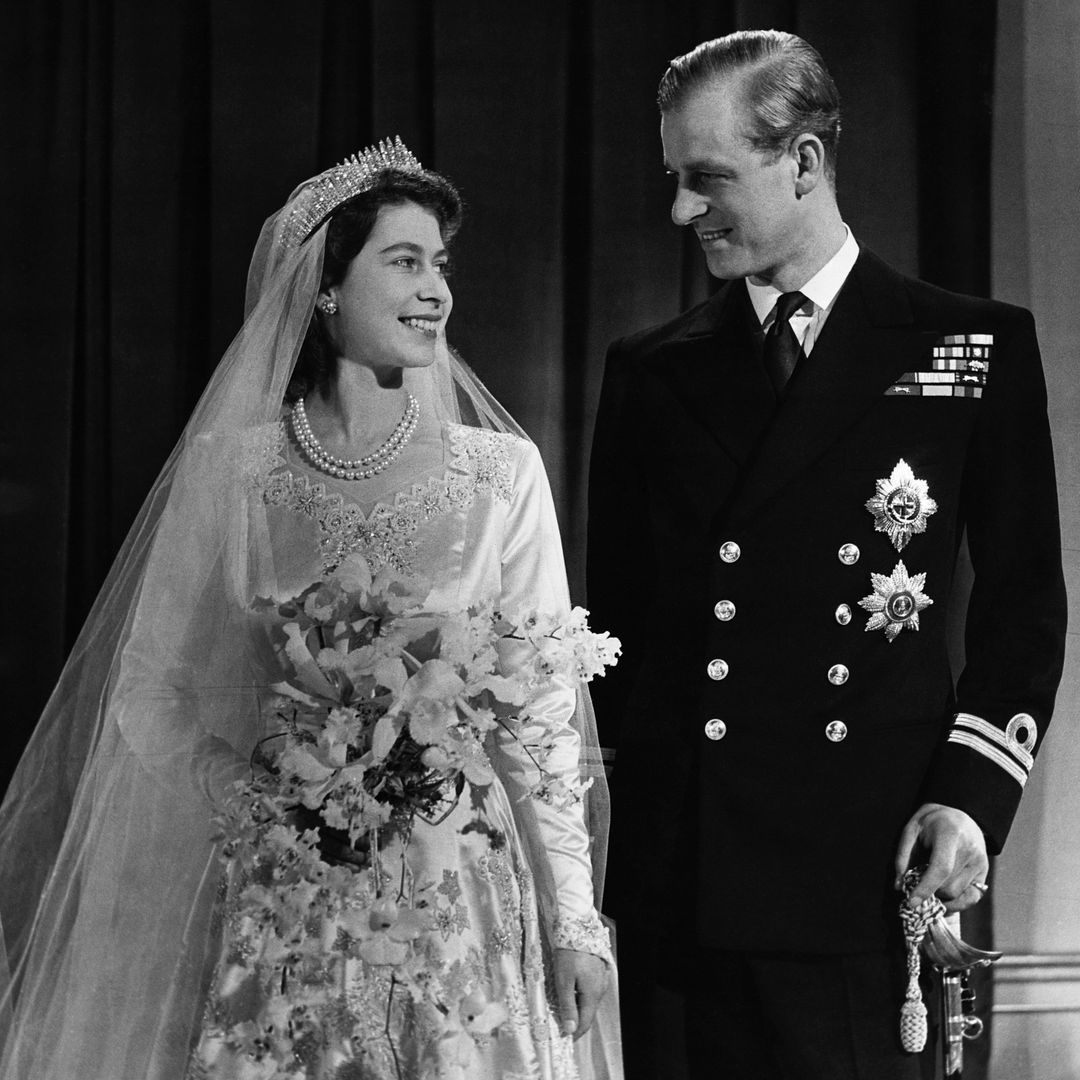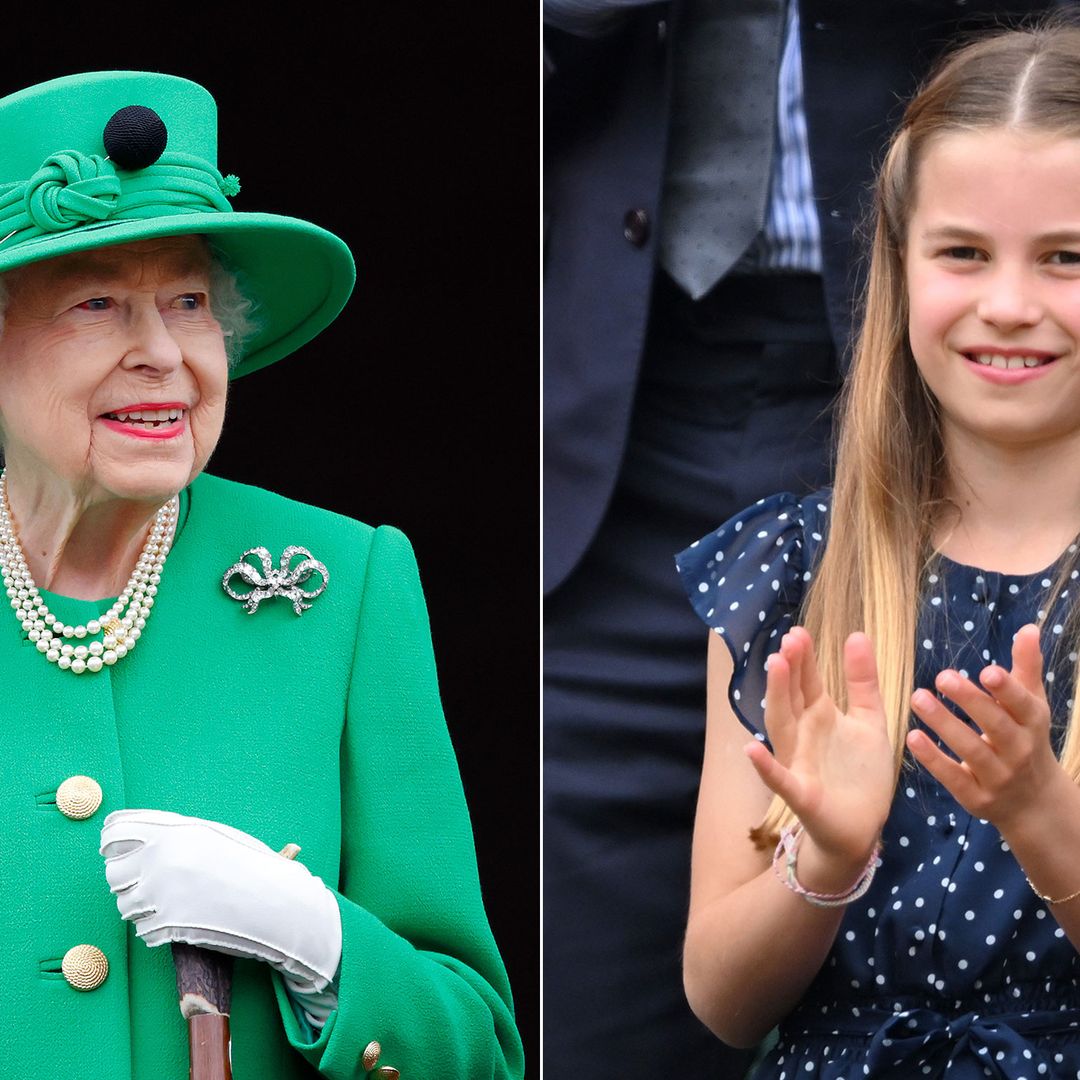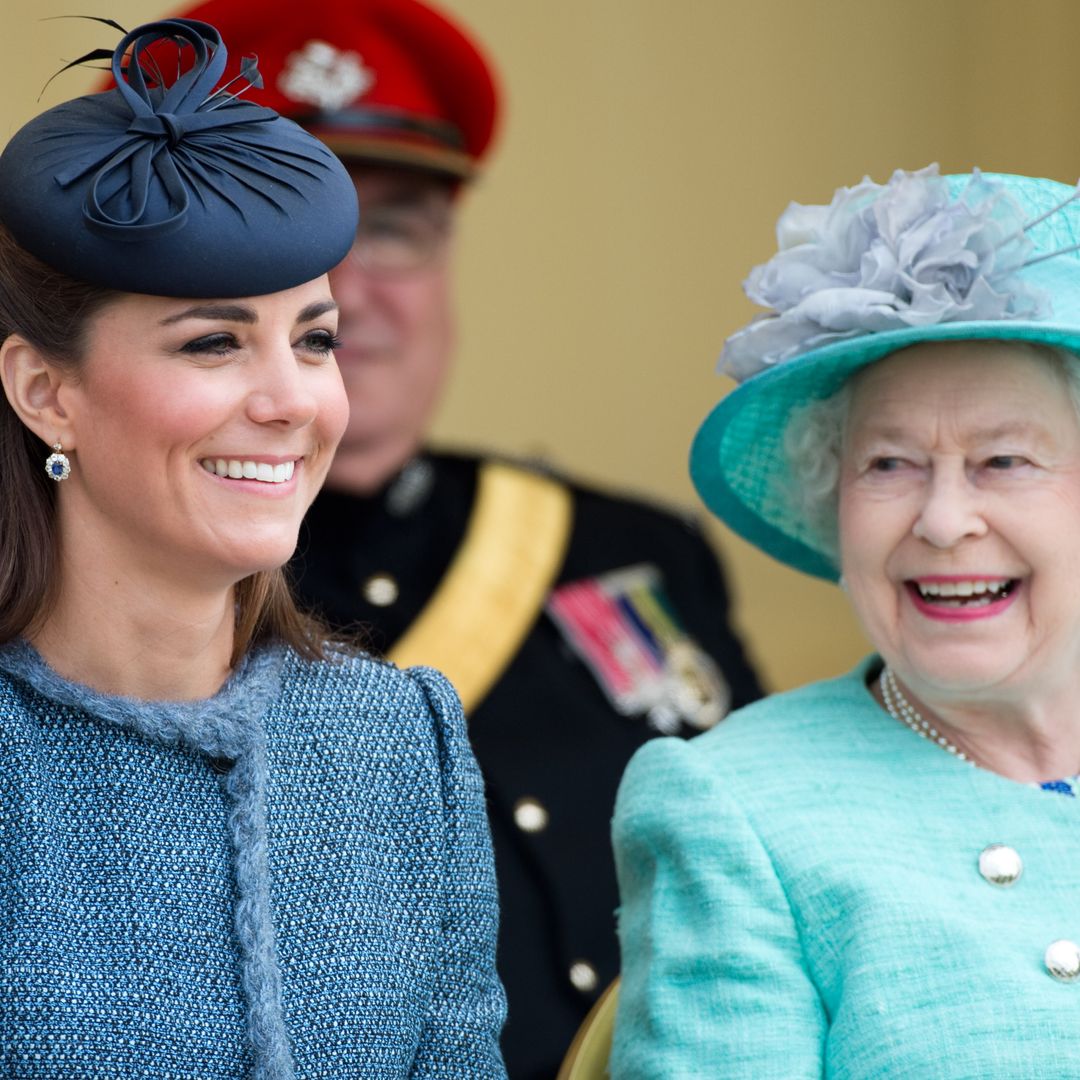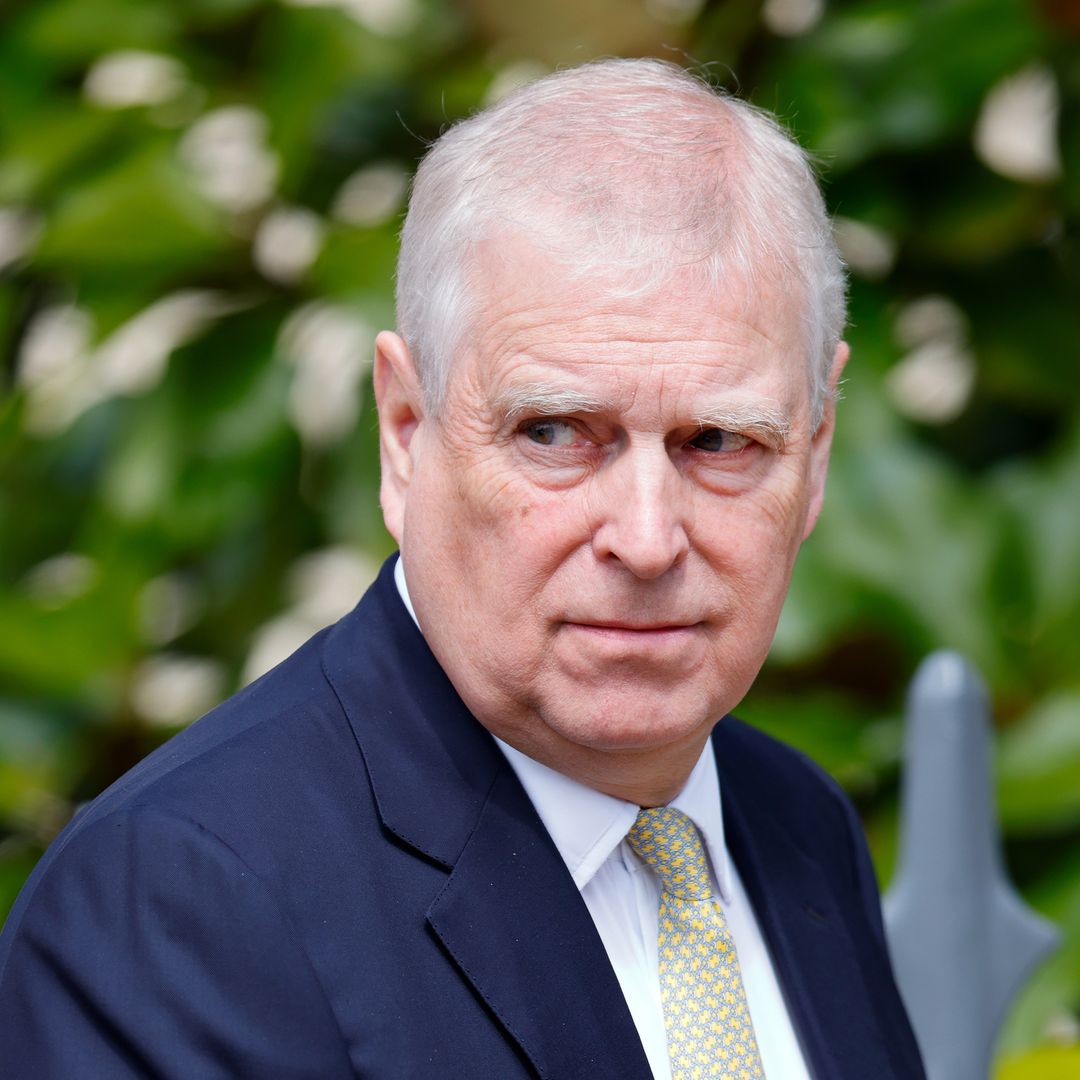The Queen wore a face mask in public for the first time this week as she made a deeply personal visit to the tomb of the unknown warrior at Westminster Abbey.
MORE: 5 foods the royal family don't eat revealed – and some may surprise you
Her Majesty, 94, bowed her head to honour all those killed while serving their country as a floral tribute inspired by her bridal bouquet was placed on the grave.
WATCH: The Queen and Prince William reunited in public for joint royal engagement
It was the monarch’s idea to stage a small, private service to mark 100 years since the unidentified British soldier was laid to rest there in the presence of her grandfather George V and her father, the future King George VI on 11 November 1920.
The Prince of Wales and Duchess of Cornwall will attend a scaled-down service to mark the anniversary this week, but the Queen will not join them on the advice of her medical staff.
MORE: 14 rules the royal family has to follow
The Queen inspects a bouquet of flowers to be placed at the grave of the unknown warrior
MORE: The Queen and Prince Philip's Christmas decorations are truly magical – see photos
Instead, on the eve of England’s second national lockdown, she was driven from Windsor to Buckingham Palace, where the royal standard briefly flew to mark her first visit to her official London residence since March.
MORE: Prince William and Kate Middleton among royals to make touching update to social media accounts
Wearing a black coat, hat and gloves, the Jardine Star brooch pinned under her poppy and a black mask trimmed with white, believed to have been designed by Angela Kelly, she then arrived at the Abbey with just her equerry, Lt Col Nana Kofi Twumasi-Ankrah.
Inside, she stood in front of the black Belgian marble tombstone lined with poppies in the western nave of the building as the Dean of Westminster Abbey, The Very Reverend Dr David Hoyle, led prayers.
The Dean of Westminster Abbey David Hoyle watches as The Queen's Equerry, Lieutenant Colonel Nana Kofi Twumasi-Ankrah, places a bouquet of flowers at the grave
The Queen then moved to look at a bouquet of white and lilac orchids, myrtle and greens, created by a palace florist to reflect the one she carried on her wedding day, touching them briefly before her equerry knelt to place them on the tomb.
After a moment of silent reflection and more prayers, Piper to the Sovereign Richard Grisdale played a lament The Flowers of the Forest from the organ loft overhead.
The Queen’s poignant gesture echoed that of her mother, who as Elizabeth Bowes-Lyon, placed her own bridal bouquet at the same spot on her way into the Abbey to marry the future King George VI, the Queen’s father, in 1923.
The Queen Mother’s touching tribute was made in memory of her brother Captain Fergus Bowes-Lyon, who died aged 26 in the Battle of Loos in 1915.
The Queen and Dean Of Westminster Abbey David Hoyle during the ceremony
And it inspired generations of royal brides to leave their own bouquets placed on the tomb – usually a day after the wedding.
This week marks the centenary of the Tomb of the Unknown Warrior and also of the Cenotaph, which was unveiled by George V during the unknown soldier’s funeral procession on Armistice Day 1920.
His remains were brought back from the World War One battlefields of Northern France and laid to rest in the Abbey, where thousands filed past to pay their respects.
Lieutenant Colonel Nana Kofi Twumasi-Ankrah places a bouquet of flowers at the grave
It became a moment of collective mourning for the nation and one that the Queen was determined to commemorate.
A royal source said: “The grave of the unknown warrior is as relevant and poignant today as it was when Her Majesty's grandfather and father stood in the abbey at its side 100 years ago. It holds enormous significance for the country and the royal family.
“The Queen was keen that the centenary was marked appropriately. A simple but deeply personal act reflecting a tradition started by her mother 97 years ago felt the right thing to do.”

